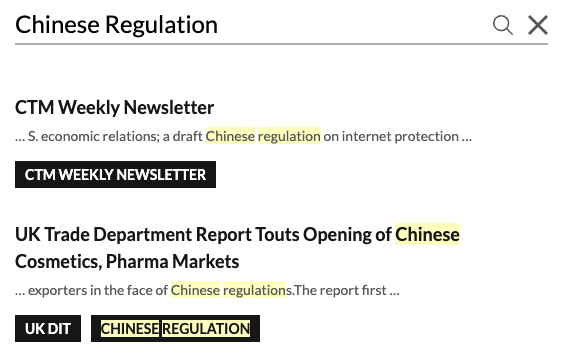On September 4, the State Administration for Market Regulation issued the Provisions on Trade Secret Protection (Draft for Comment) (《商业秘密保护规定(征求意见稿)》), to solicit public comments. Comments are due by October 18, 2020.
This Draft is to implement the new Anti-Unfair Competition Law and update the old rules. It has 39 provisions in 6 chapters, covering general provisions, concepts related to trade secrets, infringing activities, investigation and punishment of the suspected infringement on trade secrets, as well as legal liability.
The Draft defines and refines the types of trade secret infringement identified in Article 9 of the Anti-Unfair Competition Law. Article 9 describes infringement as “acquiring a trade secret from the right holder by theft, bribery, fraud, coercion, electronic intrusion, or any other illicit means,” and “disclosing, using, or allowing another person to use a trade secret acquired from the right holder” in violation of the confidentiality obligation, or “abetting a person, or tempting, or aiding a person” into “acquiring, disclosing, using, or allowing another person to use” a trade secret illegally. The Draft refines the concept of trade secret, which refers to technology, operation and business information that are unknown to the public, have commercial value, and undergoes corresponding protective measures by the right holder. It defines relevant concepts such as technology information, operation information, business information, and refines the circumstances of “public unknown,” “commercial value” and “corresponding protective measures.”
The Draft refines the circumstances of illegal acquisition of trade secrets to include theft, threats, cyber hacking, and other means. In particular, it states that unauthorized access to computer system to gain trade secrets or destroy trade secrets through a computer virus both compose trade secret theft. It also prohibits disclosure, use, or authorization of others to use illegally obtained trade secrets or legally obtained trade secrets in violation of confidentiality obligations. It defines “disclosure” and “use,” as well as “confidentiality obligation or violation of the obligee’s requirements on keeping confidential trade secrets.”
Furthermore, the Draft refines the circumstances of third-party infringement, and the circumstances of protecting “client list” as a trade secret. In addition, it lists several circumstances that do not constitute infringement, including reverse-engineering. It outlines some exceptions such as when the trade secret violates laws or impairs national interests and public interest.
It also has some procedural provisions including evidence collection and evidence preservation. In addition, compared to the old provisions, it adds a clause on the determination of “serious circumstances,” the calculation of illegal gains and the damage to the right holder.
The Draft is a revision to the Certain Regulations on Prohibiting Infringement of Commercial Secrets. These Regulations were issued in 1995 by the State Administration for Industry and Commerce and revised in 1998. In the U.S.-China trade deal, China made commitments to strengthen its trade secret protection. Subsequently, China revised its Anti-Unfair Competition Law in 2019 to improve its legislation on trade secret. The 2019 law clarifies circumstances of trade secret infringement that constitutes unfair competition, identifies the obligations of administrative agencies and officials, increases the penalties, and adjusts the burden of proof.

